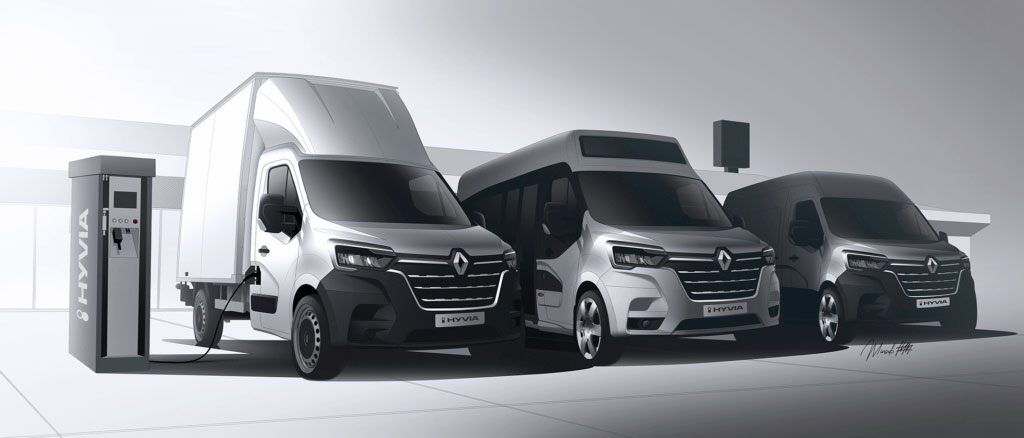E-fuels could prolong the life of the internal-combustion engine (ICE), keeping the technology relevant in a world that requires more sustainable transportation. But will there be enough of these synthetic fuels to go around?
Armed with new analysis, green group Transport and Environment (T&E) claims there will only be enough e-fuels to power roughly 2% of all the cars on Europe’s roads come 2035. However, the eFuel Alliance, an organisation committed to carbon-neutral fuels, points to a higher percentage being available sooner.
A fraction of the fleet
Combining hydrogen and CO2, the power-to-liquid process produces synthetic hydrocarbons, an artificial version of the chemicals found in fossil fuels. A refinery process then separates out different e-fuels for specific applications, including automotive and aviation.
Proponents claim there e-fuels can be used in new and used vehicles as either a drop-in solution to be combined with fossil fuels or as a stand-alone power source. With the impending 2035 100% carbon-emission reduction target set for new cars in Europe, these synthetic fuels hold the potential to keep ICE models on the road.
But using data from Concawe, the refining industry’s research unit, T&E forecasts that only five million of the 287 million cars on Europe’s roads in 2035 will be able to take advantage of e-fuels. This 2% figure would only rise to 3% if the existing car fleet switched to plug-in hybrids (PHEVs).

‘Trojan horse’
The environmental group used this forecast to evidence its belief that e-fuels are a stalling tactic deployed by oil companies and engine makers to avoid the transmission to zero-emission technology. It urged EU lawmakers to resist the temptation of a synthetic-fuel loophole in emissions targets rules.
‘E-fuels are presented as a carbon-neutral way to prolong the life of combustion-engine technology,’ said Yoann Gimbert, e-mobility analyst at T&E. ‘But the industry’s own data shows there will only be enough for a tiny fraction of cars on the road. Lawmakers should close the door to this Trojan Horse for the fossil-fuel industry.’
T&E explained the industry’s forecast was based on e-fuel production in the EU but included carbon captured from industrial emitters. Synthetic fuels created with carbon from fossil-fuel sources could potentially lock in investment into fossil sources, slowing down decarbonisation. It said the projections also fail to clearly define how much renewable energy would be used during the creation of the e-fuels.
The group also pointed out that industry plans to import e-fuels are unrealistic as the production sites and standards required for certification do not exist. Taking synthetic fuels from other countries might also delay decarbonisation efforts in less developed economies.
‘In Europe, e-fuels for cars would suck up renewable electricity needed for the rest of the economy,’ said Gimbert. ‘Synthetic fuels that are made in Europe should be prioritised for planes and ships, most of which cannot use batteries to decarbonise.’
‘Clear intentions’
But Dr Tobias Block, head of strategy and content at the eFuel Alliance told Autovista24 that T&E’s intentions were clear. ‘Their position is an all-electric road sector without any role for climate-neutral combustion engines,’ he said.
Block went on to level a collection of criticisms at T&E’s 13-page publication. He pointed to eFuel Alliance analysis, which found that a mix of at least 5% synthetic fuels will be possible in the European market come 2030. ‘5% e-fuels are enough to power 40 million vehicles and to avoid 60 million tonnes of CO2 emissions,’ he said. This higher level is also backed by members of the alliance, who claim to be capable of increasing production capacities to meet the goal.
Block also pointed out that the Concawe study does not include the import of e-fuels to Europe. ‘E-fuels will be mainly produced in regions, in which renewable electricity generation is cheap and potentially abundant. For that reason, first projects are announced in Chile, Australia or the Middle East,’ he said. So, if these production locations are ignored, the availability of synthetic fuels would be much lower.
Furthermore, the Concawe study does not exist in isolation. There are many other pieces of research that have considered the global production of e-fuels. ‘For example, the Finnish LUT university foresees a huge potential of e-fuels already in 2030,’ Block said.
He explained that if synthetic fuels are not available, existing vehicles will continue to rely on those derived from fossils. To secure a place among the mobility systems of the future, e-fuels will continue to be dependent upon a supportive political framework, one which is not always present. So, the future of synthetic fuels appears undecided as arguments over supply, sustainability, and simple potential rumble on.
This content is brought to you by Autovista24.




 Close
Close

